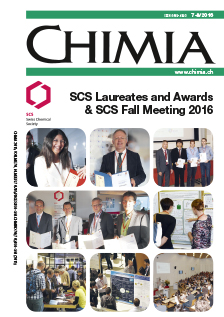Advanced UV Absorbers for the Protection of Human Skin
DOI:
https://doi.org/10.2533/chimia.2016.496Keywords:
Cosmetics, Liposome, Photostability, Sun protection, Uv absorbers, Water resistanceAbstract
The increasing awareness of the damaging effects of UV radiation to human skin triggered the market introduction of new cosmetic UV absorbers. This article summarizes the outcome of a multi-year research program, in which the author contributed to the development of different new UV filters. First of all, the molecular design and the basic properties of bis-ethylhexyloxyphenol methoxyphenyl triazine (BEMT) will be presented. This oil-soluble filter, which today is widely used in both beach products and skin care products, exhibits inherent photostability and strong broad-spectrum UV-A+B absorbance. Based on the concept of micronized organic UV absorbers, the UV-B filter tris biphenyl triazine (TBPT) will be introduced. At present TBPT exhibits the highest efficacy of all cosmetic UV absorbers in the market (measured by area under the UV spectrum). Finally, the concept of liposomogenic UV absorbers will be featured. This approach was developed to create water-resistant UV filters, as liposomogenic structures are thought to integrate into the lipids of the horny layer. Due to prohibitively high costs, this technology did not result in a commercial product so far.Downloads
Published
2016-08-24
Issue
Section
Scientific Articles
License
Copyright (c) 2016 Swiss Chemical Society

This work is licensed under a Creative Commons Attribution-NonCommercial 4.0 International License.
How to Cite
[1]
D. Hüglin, Chimia 2016, 70, 496, DOI: 10.2533/chimia.2016.496.







